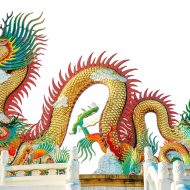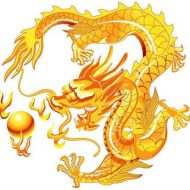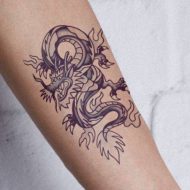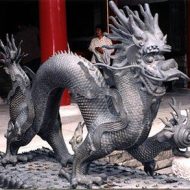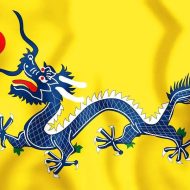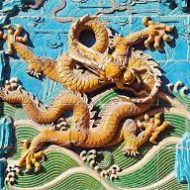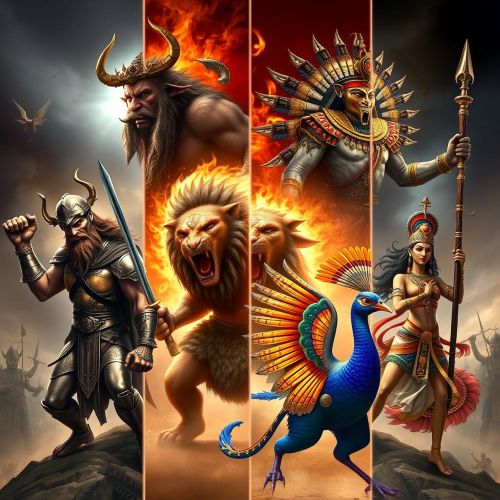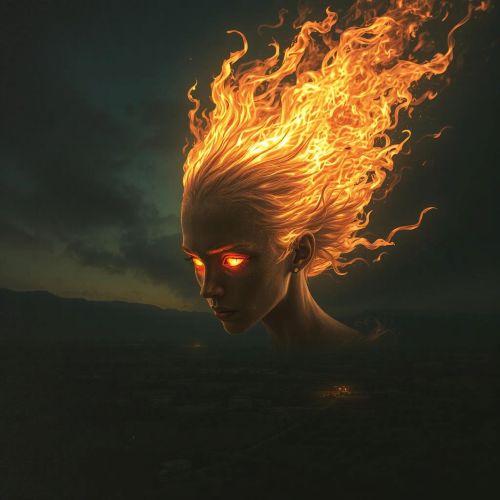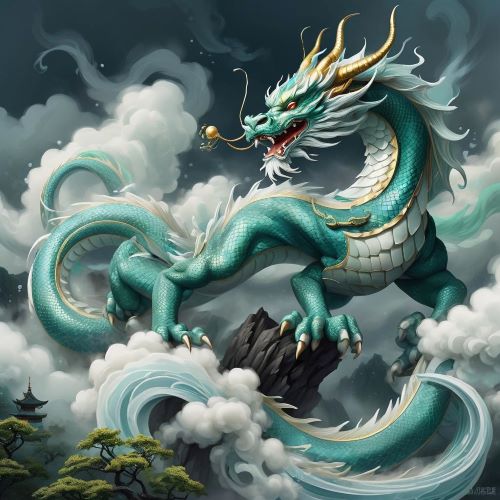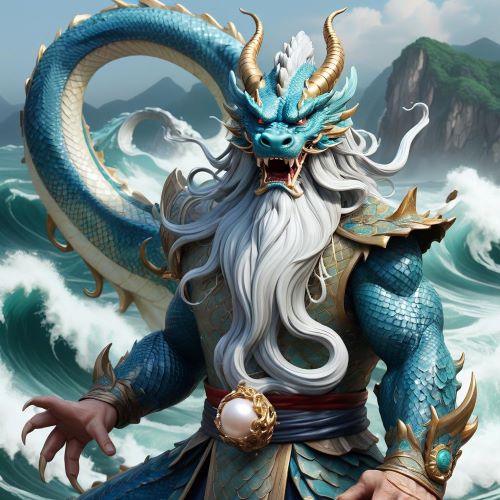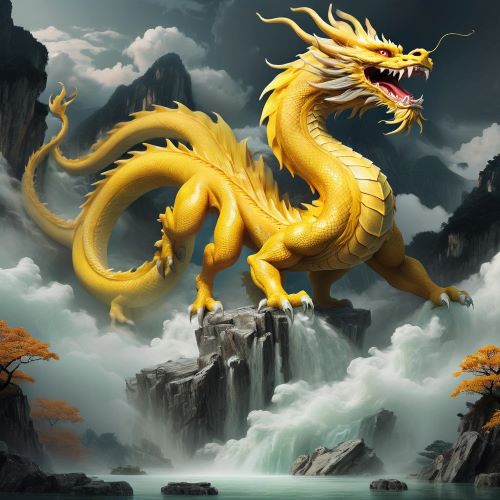Fuzanglong : The Treasure Dragon
Listen
At a glance
| Description | |
|---|---|
| Origin | Chinese Mythology |
| Classification | Animals |
| Family Members | Zhulong (Brother) |
| Region | China |
| Associated With | Treasure, Volcanoes, Prosperity |
Fuzanglong
Introduction
Fuzanglong, also referred to as Fúzánglóng or Fu-ts’ang-Lung, holds a revered position in Chinese mythology as the dragon of hidden treasures. Residing in the depths of the earth, this serpentine dragon guards both natural and man-made treasures. Legends suggest that volcanoes are formed when these dragons emerge from the ground to report to heaven. Unlike celestial dragons associated with weather phenomena, Fuzanglong embodies the secrets buried within the earth. Amidst the myriad of dragon tales in Chinese mythology, Fuzanglong stands out for its mysterious power. Despite being overshadowed by more famous dragons like the Azure Dragon and Lung Wang, Fuzanglong maintains a unique presence in folklore.
Physical Traits
In contrast to the typical portrayal of majestic, quadrupedal dragons in Chinese art, Fuzanglong is described as a sinuous creature resembling a giant snake, adorned with iridescent scales, and possessing both power and grace. Depictions often include formidable claws and horns, enhancing its intimidating presence, with some legends describing its demonic, penetrating eyes in the darkness of its underground realm. While its exact size remains a mystery, tales hint at its colossal stature capable of causing seismic disturbances. Fuzanglong epitomizes the classic image of a Chinese dragon, with its elongated body, whiskers, and intricate scaled patterns exuding an aura of ancient wisdom, reflected in its jade-like eyes. Unlike the vibrant hues of other dragons, Fuzanglong is often depicted in subdued tones reminiscent of earth and stone, symbolizing its affinity with subterranean realms. Notably, while Chinese dragons are typically associated with five different colors representing various attributes, Fuzanglong stands out with its unique dark red hue, symbolizing the volcanic eruptions it embodies.
Family
Belonging to the extensive spectrum of Chinese dragons, the Fuzanglong stands apart from its celestial counterparts, known as shenlong, which are linked to celestial realms and weather phenomena. Classified as an earth dragon, or dilong, the Fuzanglong’s domain lies in the underworld, where it safeguards hidden treasures. While some scholars perceive the Fuzanglong as a solitary guardian, others propose a potential association with the Dragon Kings, revered deities governing the seas, due to their shared responsibility of protecting valuable possessions – the Fuzanglong with earthly treasures and the Dragon Kings with their aquatic realms. In the intricate hierarchy of Chinese dragon lore, the Fuzanglong holds a distinct familial position.
Often considered the subterranean counterpart to celestial dragons, it is believed to inhabit the depths of the earth, safeguarding ancient secrets and treasures. While lacking the prominent lineage of cardinal direction dragons, the Fuzanglong’s lineage traces back to the elemental essence of the earth itself, endowing it with immense significance in Chinese mythology. Adding to its intriguing narrative, Fuzanglong’s origins are tied to Tianlong, a dragon who constructed a grand palace on the moon. Born alongside his brother Zhulong, Fuzanglong roamed the world until discovering a magical pearl, granting him the ability to locate treasures across the earth.
Other Names
The name Fuzanglong, derived from “Fú” meaning “hidden,” “Cáng” meaning “treasure,” and “Lóng” meaning “dragon,” aptly encapsulates its role as the guardian of hidden treasures. An alternate rendering of its name, Fu-ts’ang-Lung, reflects an older transliteration system, though less prevalent in contemporary texts. Throughout Chinese folklore, Fuzanglong is known by various epithets, each highlighting different aspects of its character and domain. Terms like “Hidden Dragon of the Earth” and “Dragon of the Hidden Treasures” emphasize its guardianship of the subterranean realm, while designations like “Dragon of the Deep” and “Keeper of the Underworld” underscore its association with the mysterious depths. Additionally, Fuzanglong is commonly known as Fucanglong in some accounts.
Powers and Abilities
The Fuzanglong’s primary domain lies in its guardianship of the earth’s hidden treasures, including vast caches of gold, precious stones, and ancient artifacts. Legends attribute to them the influence over the formation of valuable minerals and gems deep within the earth, while their connection to the underworld grants them formidable physical strength, capable of causing earthquakes and volcanic eruptions upon emerging from their subterranean abodes. Some tales hint at the possession of a mysterious magical pearl, the nature and purpose of which remain enigmatic. Despite their reputation as fierce protectors of these treasures, their motivations are often portrayed as rooted in ensuring the resources remain hidden until discovered by worthy seekers. Despite being less known compared to other dragons, Fuzanglong boasts a formidable array of powers befitting its ancient lineage.
Legends depict it as commanding the elements of the earth, capable of shaping landscapes and causing seismic disturbances at will. Its mastery over earth and stone endows it with unparalleled strength and resilience, rendering it nearly invincible to all but the most powerful adversaries. Additionally, Fuzanglong is revered for its boundless wisdom, safeguarding esoteric knowledge concealed within the earth’s depths. Among its prized possessions is a mysterious magic pearl, believed to hold immense value and guarded with utmost care, akin to the most precious treasures like silver and gold. Notably, Fuzanglong’s association with volcanic eruptions stands as one of its most remarkable powers.
Modern Day Influence
The Fuzanglong remains a captivating figure in modern culture, transcending its mythical origins to inspire various forms of entertainment and artistic expression. In video games, they often appear as formidable adversaries guarding valuable treasures, adding excitement to gaming quests. Their association with wealth and hidden riches also makes them a recurrent motif in fantasy literature, where they play roles as both guardians and potential allies to treasure seekers. Beyond their entertainment value, Fuzanglong holds symbolic significance deeply rooted in Chinese culture. As symbols of power, wisdom, and good fortune, dragons represent untapped potential and the rewards of perseverance and exploration.
The legend of Fuzanglong serves as a metaphor for the hidden treasures that lie beneath the surface, encouraging individuals to delve deeper into the unknown and appreciate the value of what may not be immediately apparent. While existing within the realm of myth and legend, Fuzanglong’s influence extends into the modern era, captivating imaginations worldwide and serving as a timeless source of inspiration in literature, art, and popular culture. Its depiction in various media reflects humanity’s enduring fascination with the mysteries of the earth and the allure of the unknown, reminding us of the enduring power of myth to enchant and enlighten. Moreover, Fuzanglong’s presence continues to influence contemporary culture, particularly evident in depictions of dragons in art and literature, where they often serve as mounts to Immortals, showcasing the enduring richness of ancient Chinese mythology and inspiring fascination and admiration in audiences worldwide.
Related Images
Frequently Asked Questions
Who is the black dragon in Chinese mythology?
Chinese black dragons, or Heilong, are linked to the north and winter. They can be Dragon Kings, water deities. Unlike other dragons, black ones symbolize storms, floods, and vengeance.
What is the name of the dragon that guards the underworld?
The dragon guarding the underworld in Chinese mythology is not called Fuzanglong. The guardian of the underworld is most likely Niutou Maomiou (牛頭馬面 Niútóu Mǎmiàn), a demon depicted as a bull-headed and horse-headed figure. Fuzanglong, as described earlier, is an earth dragon associated with hidden treasures, not the underworld itself.
How many types of dragons are there in Chinese mythology?
What is the myth of the dragon in China?
China’s dragon myth isn’t one story, but a vibrant tapestry. Dragons (long) come in many forms, linked to colors (emperor’s yellow!), regions, and elements (watery Dragon Kings!). Generally, they embody power, wisdom, and good luck. These shape-shifting creatures can be guardians of treasures or rulers of the skies, weaving themselves into the very fabric of Chinese mythology.
Why don't Chinese dragons have wings?
Unlike Western dragons, Chinese dragons trade wings for magic. Their flight stems from power, not physics. Early inspiration came from wingless snakes. Wings might downplay their majestic strength, and their serpentine form itself suggests powerful movement. Symbolically, the dragon’s form could represent flowing rivers or a magical connection between earth and sky. While some variations have bat-like wings, the wingless dragon reigns supreme in Chinese mythology.

